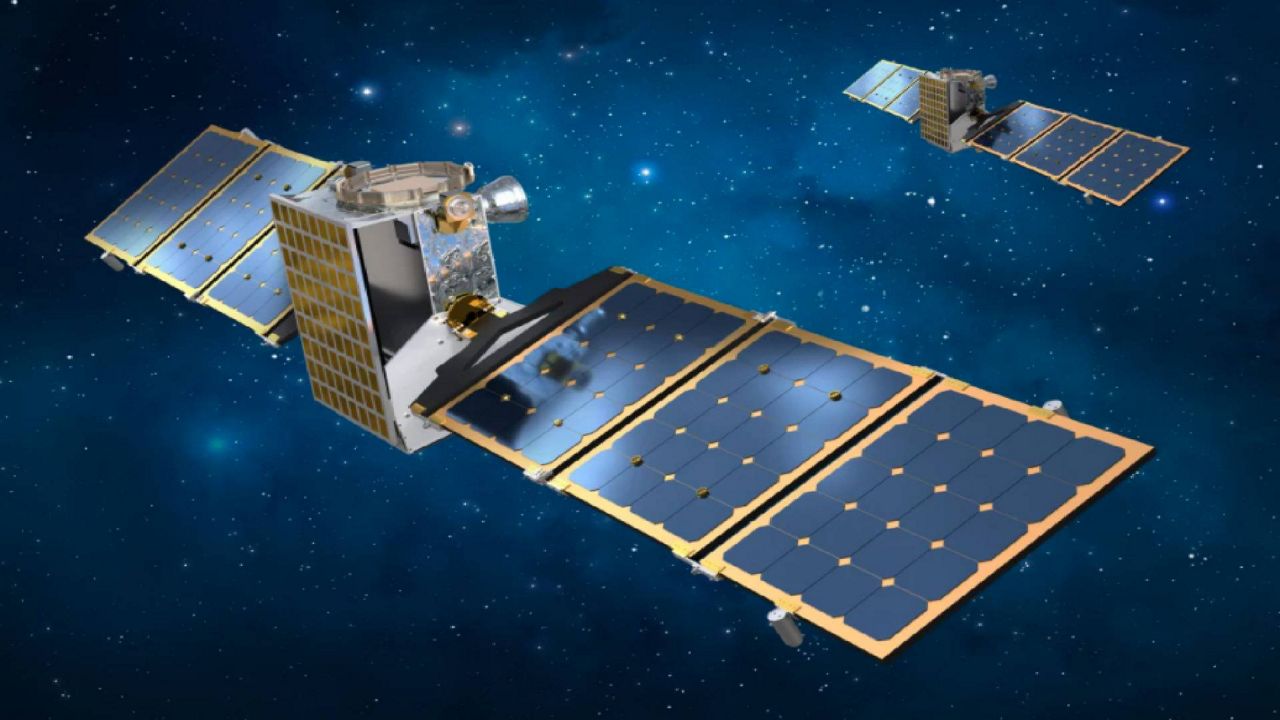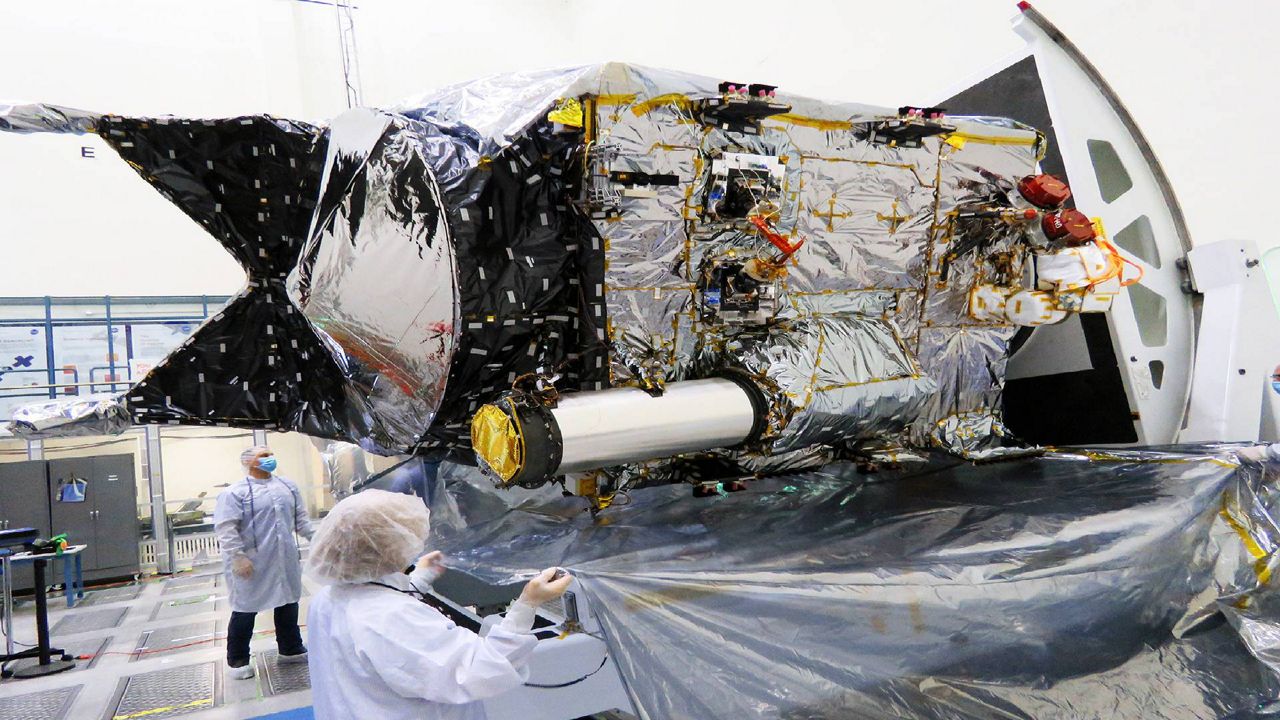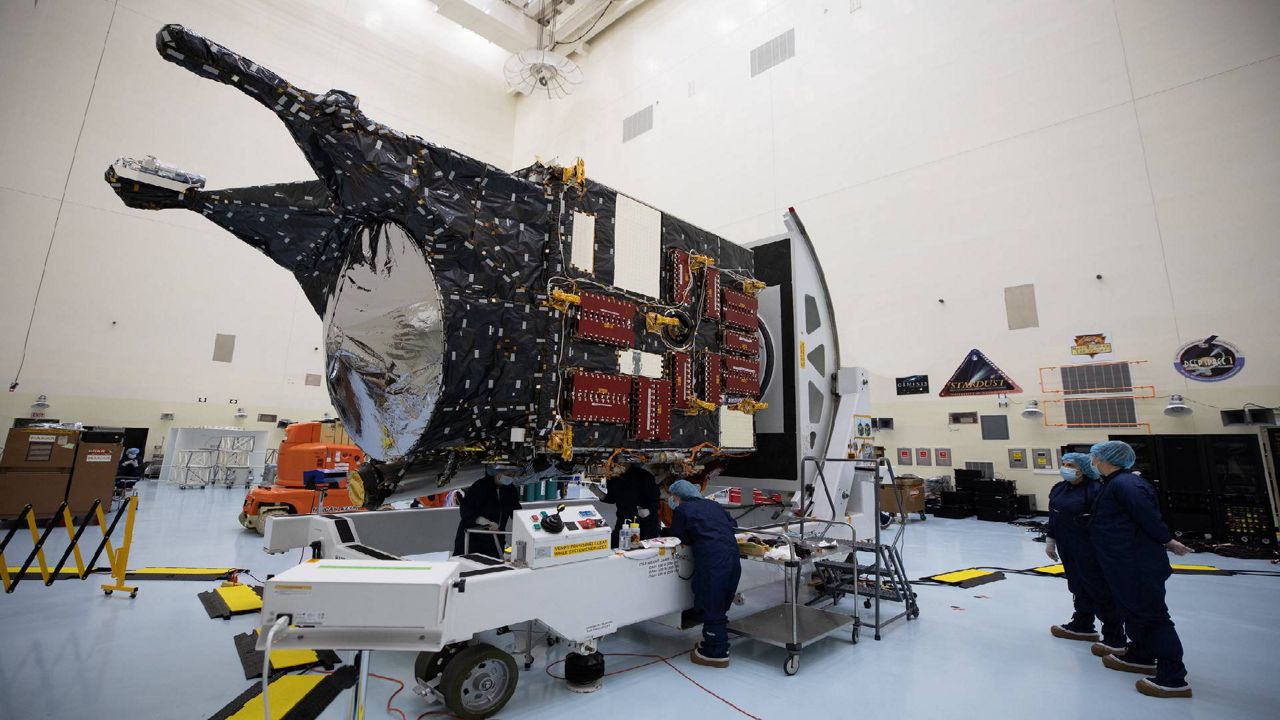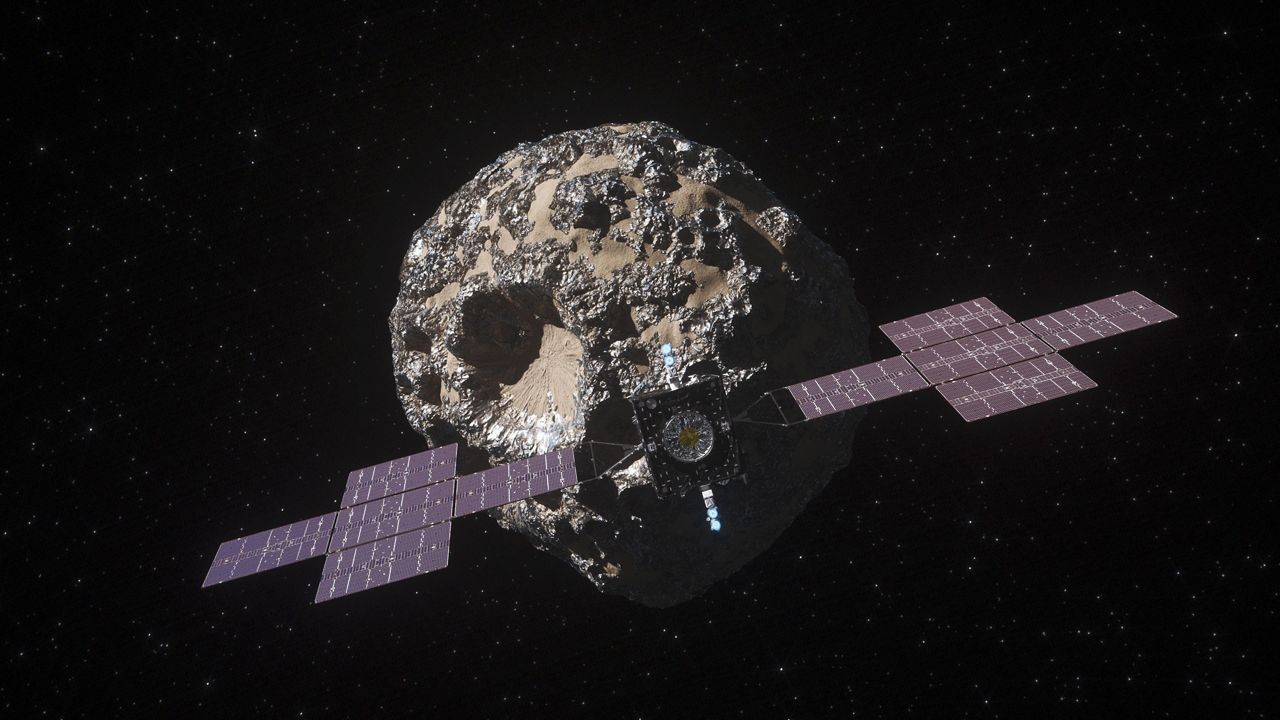BREVARD COUNTY, Fla. — An important and expensive exploration mission for NASA is officially off the books for 2022.
After announcing a launch delay in May pushing the Psyche mission from August 1 to no earlier than (NET) September 20, the agency made what they described as a “difficult” decision to make the call.
What You Need To Know
- A delay with software delivery and testbed issues contributed to the mission delay
- Psyche is a $985 million mission to explore a metal-rich asteroid by the same name
- The mission will launch aboard a SpaceX Falcon Heavy rocket, if and when the mission moves forward
- Assessments will be made both by an independent review team as well as a continuation/termination review board
“Delay is very disappointing, but it is the right decision to ensure the Psyche mission is a success at JPL,” said Laurie Leshin, the director of NASA’s Jet Propulsion Laboratory (JPL), during a media teleconference on Friday. “We are committed to working with NASA on the options for a path forward for Psyche and to work with the independent review team and learn from this moment as we move forward.”
Psyche was first developed as a mission concept more than a decade ago in 2011. It was selected in September 2015 for consideration as part of NASA’s Discovery Program. The proposal from teams at Arizona State University, JPL and Maxar Technologies was presented in November 2016 and on January 4, 2017, it was selected for flight.
The mission of the spacecraft was to travel to its namesake asteroid, one characterized by its nickel-iron makeup, which scientists believe indicate that it was the core of an early planet. Researchers are hoping that the mission to explore it will teach us more about the creation of planets, like Earth.
The Psyche spacecraft would also be the first time we explored “a world made not of rock and ice, but metal,” according to ASU.
A launch in 2022 would’ve meant that the spacecraft would reach the Psyche asteroid, which sits between Mars and Jupiter, in 2026.
Dr. Lori Glaze, NASA’s Planetary Science Division Director, said the setback announced on Friday, June 24, did not mean the agency was pulling back from it work studying small, celestial bodies.
“This is exemplified by our existing missions: OSIRIS REx, Lucy and Dart. And we are anxiously anticipating the review of Psyche to better understand what that path forward looks like,” Glaze said.
What went wrong?
Going into its final year before it was set to launch, the teams working on the Psyche spacecraft were hit with a one-two-punch that meant missing the targeted launch window, which ran from August 1 through October 11.
Leshin said one issue was the late delivery of the software for the Guidance, Navigation and Control (G, N and C) system for the spacecraft. She said there were some issues with getting it to operate correctly, but once they were able to do that, Leshin said there wasn’t time to properly and thoroughly test it.
“We’re confined to a tight planetary launch period, where we can’t miss it even by a short period of time and reach Psyche,” Leshin said.
Lindy Elkins-Tanton, the Psyche mission principal investigator at ASU, said they were aware in 2021 that the software was late. This software is somewhat new for NASA, but has its roots in at least one previous mission.
“Parts of it are unique to Psyche. We share a lot with Clipper in other parts of this software,” Elkins-Tanton said. The Europa Clipper mission is targeting an October 2024 launch towards Jupiter’s icy moon of Europa.
The other shoe dropped in early 2022 when they ran into an issue with what’s known as the “testbed,” which is a combination of hardware and software that’s designed to simulate the systems of the spacecraft.
“It’s intended to make a replica of the flight system onto which you can then run the software to test out all of the system behaviors,” said Dr. Henry Stone, the Psyche project manager.
JPL has its own testbeds that it uses for spacecraft. However, because they were using components from the company Maxar as well, they had to factor that in as well.
“Many of the G, N and C related sensors and actuators that are on the spacecraft are provided by Maxar as part of what we call the ‘solar electric propulsion chassis bus,” Stone said. “And so, we had to merge that portion of simulators and test equipment with the portion at JPL to create the overall system and we ran into some issues there.”
Leshin said that even though the issue with the testbed has proven more problematic than anyone would’ve liked, she said it’s valuable to learn all of the ins and outs of partnering with a private company in this capacity.
“It’s been a real advantage to work with a commercial bus provider, like Maxar,” Leshin said. “And we want to learn from that so that we can continue to collaborate with commercial partners in the future.”
Ripple effect
Despite being the star of this mission, the Psyche spacecraft wasn’t the only piece that was impacted by this delay. Also along for the ride was the secondary mission dubbed “Janus.”
It comprised of two small spacecrafts — Janus A and Janus B — which were designed to “fly by a binary asteroid and image it with visible and infrared cameras,” according to NASA.

On the original timeline, they would’ve separated from the main spacecraft in August 2025 to reach their targets in March and then April 2026.
When the Psyche mission was delayed in May from a launch on August 1 to no earlier than September 20, Glaze said the Janus team was able to identify new targets for that mission.
NASA is still very interested in keeping Janus with Psyche since Janus is one of what the agency classifies as a “Class D mission.” The type of mission was established in 2010 and are missions deemed “relatively high-risk, provide an ideal platform for technological and architecture innovation and are a training ground for a diverse set of scientists and engineers.”
Another example of a Class D mission would be TROPICS, which is being launched by Astra.
The other key instrument that is integrated as a part of the Psyche spacecraft is the Deep Space Optical Communications (DSOC). The tech demonstration will be NASA’s “first demonstration of optical communications beyond the Earth-Moon system.

What happens now?
With the 2022 launch date, Psyche was supposed to spend 21 months orbiting the asteroid before closing out the mission starting in November 2027.
However, with the delay until either 2023 or 2024, NASA said that because of “the relative orbital positions of Psyche and Earth,” the spacecraft would not reach its target until 2029 or 2030.
Elkins-Tanton said there are launch opportunities in July and September 2023, noting that “we do have very good indications that there are some excellent opportunities in 2023.”
“The electric propulsion design of the spacecraft means that we do actually have a lot of flexibility with launch opportunities,” Leshin added. “So, there are good looking opportunities in ’23 that get us there before the end of the decade. And we’re looking at those, we will be looking at those in great detail over the coming weeks.”
However, it’s not just getting past the current issues, but having a deep understanding of what led to this problem.
Glaze said an independent review will be conducted “to assess the path forward for this project for Psyche and a decision will be made in the coming months.”
“That independent assessment team will be made up of experts from government, academia and industry,” Glaze said. “And they’ll review all possible options for next steps, including the estimated costs for each of the various possibilities.”
Part of that scope will also be looking at the implications of this setback for both NASA’s Discovery Program and the larger planetary science portfolio.
Within the original scope of the mission, NASA stated that the whole thing, including the rocket, cost $985 million. To date, $717 has been spent.
In February 2020, NASA awarded the $117 million Launch Services Contract to SpaceX to launch the mission aboard a Falcon Heavy rocket. The deal was brokered via NASA’s Launch Services Program (LSP) at Kennedy Space Center (KSC) in Florida.
When asked about the rocket on Friday during the media teleconference, Glaze said it was unclear what the next steps are for that rocket assigned to this mission.
“There are a whole list of questions that we have on our list that we need to address and we will start ticking those off as quickly as we can,” Glaze said. “And the launch vehicle is one of those.”

It’s also unclear if the Psyche spacecraft will remain at KSC while the evaluation work is being done or it will be relocated elsewhere to free up space.
“This team has been 100 percent focused on making this 2022 launch opportunity,” Leshin said. “So, things like what exactly will happen with this physical hardware, the spacecraft that’s at the Cape now, is work ahead. And we will share that when we have it, but we don’t have that plan yet.”
In addition to the independent review, there will also be a continuation/termination review, which Glaze said is standard practice “when there’s a change, particularly if we’re looking at additional costs or changes in schedule that are significant.”
“We do always want to make sure that we bring that back to NASA to the decision authority, which is Thomas Zurbuchen, the associate administrator for science at the Science Mission Directorate, so that we have an opportunity to really assess all of the information and make sure we’re making the right decisions.”
NASA takes the cost and schedule commitments of its projects and programs very seriously. We are exploring options for the Psyche mission in the context of the Discovery Program, and a decision on the path forward will be made in the coming months.
— Thomas Zurbuchen (@Dr_ThomasZ) June 24, 2022



